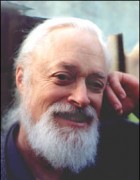More and more I think of my transformational work as a DNA-modifying RNA molecule, tweaking the changes needed for conscious evolution.
The dominant social DNA – the society-shaping designs and dynamic patterns that replicate and evolve – are all undergoing rapid change right now, sometimes in response to local social and environmental conditions, sometimes in response to internal mutations in the dominant pattern itself – from green to fascist to transhumanist to… I believe it is possible to consciously design consciously evolving life-serving social patterns in response to changing challenges and opportunities in our evolving life contexts. I believe this involves a mix of experience and observation, intuition, emergence, analysis, and incessant integral weaving and reweaving of patterns into frameworks and stories. The most concentrated way I’ve found so far to give form to this inquiry is the “pattern language” – a framework of interrelated design elements observed or imagineered as decisive in the existence of a system that is healthy, sacred, live-enhancing, and vibrant – i.e., a living system that has what Christopher Alexander (the founder of pattern languages) called “the quality that has no name”. In the 1960s and 70s Alexander and a team of architects and designers traveled the world exploring communities and buildings that had the quality that has no name, searching for what made them that way. They articulated the first pattern language, a now famous one that clarified 253 physical design factors that generate vibrant buildings and communities – http://www.patternlanguage.com/leveltwo/patterns.htm. Inspired by the remarkable work of Alexander’s team, many others have created pattern languages since then – especially dealing with computers and education, but lately also with social dynamics and social change. Not all of these pattern languages use the same rigorous standards for the pattern languages themselves. But all have the same vision of identifying the interconnected elements that make up a particular kind of wholesome system to provide valuable understandings to change agents consciously trying to bring greater life to the social systems they work with. Here are four pattern languages especially relevant to social evolution:- The Public Sphere Project – http://www.publicsphereproject.org/drupal/patterns_pool – a pattern language for wholesome information and communication systems
- Reliable Prosperity – http://www.reliableprosperity.org – a pattern language for a wholesome, sustainable economy
- GroupWorks – http://grouppatternlanguage.org – a pattern language for wholesome group process
- Transition Network Ingredients – http://www.transitionnetwork.org/ingredients – a pattern language for wholesome community transition from oil dependence.
